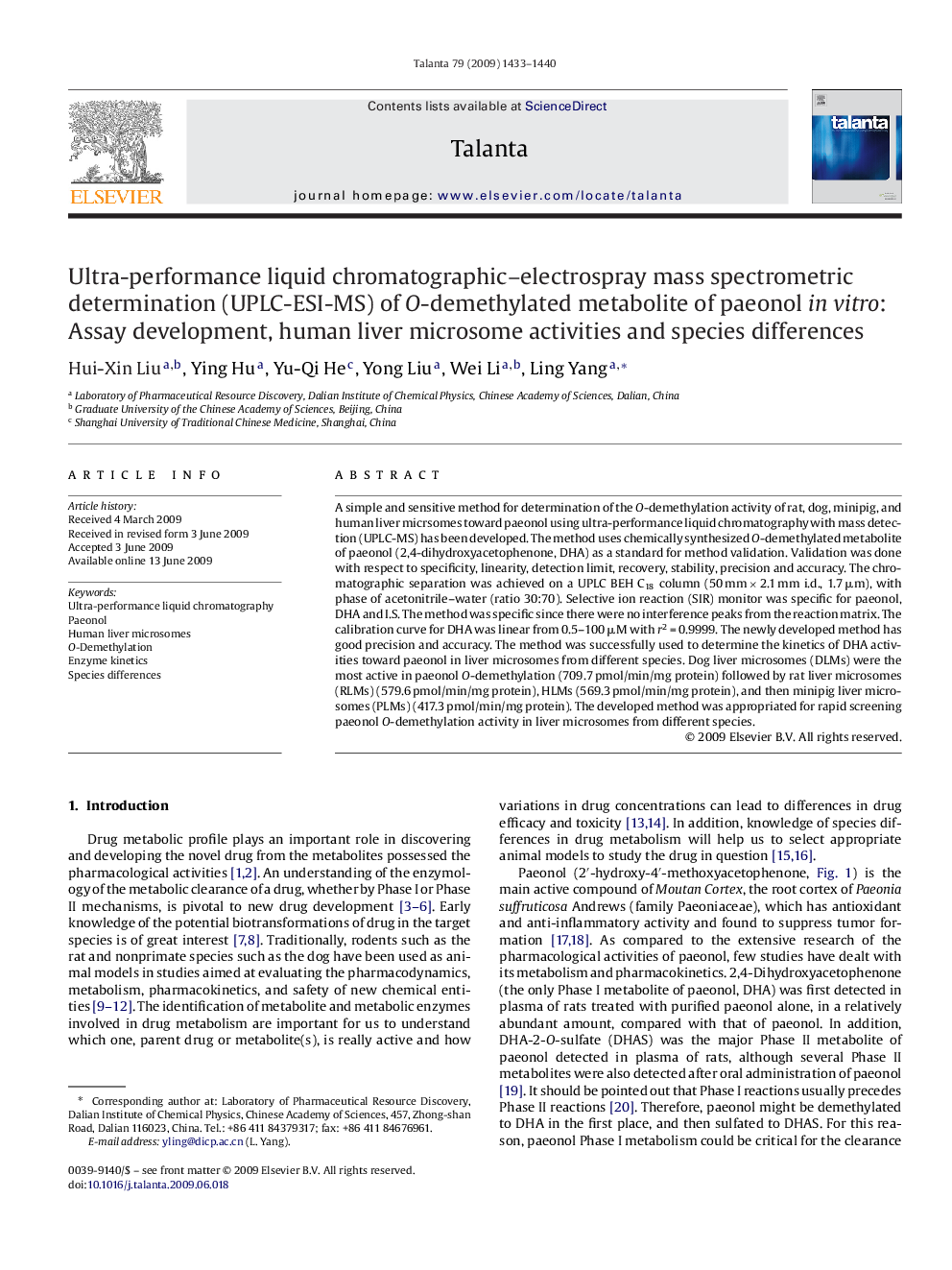| Article ID | Journal | Published Year | Pages | File Type |
|---|---|---|---|---|
| 1246844 | Talanta | 2009 | 8 Pages |
A simple and sensitive method for determination of the O-demethylation activity of rat, dog, minipig, and human liver micrsomes toward paeonol using ultra-performance liquid chromatography with mass detection (UPLC-MS) has been developed. The method uses chemically synthesized O-demethylated metabolite of paeonol (2,4-dihydroxyacetophenone, DHA) as a standard for method validation. Validation was done with respect to specificity, linearity, detection limit, recovery, stability, precision and accuracy. The chromatographic separation was achieved on a UPLC BEH C18 column (50 mm × 2.1 mm i.d., 1.7 μm), with phase of acetonitrile–water (ratio 30:70). Selective ion reaction (SIR) monitor was specific for paeonol, DHA and I.S. The method was specific since there were no interference peaks from the reaction matrix. The calibration curve for DHA was linear from 0.5–100 μM with r2 = 0.9999. The newly developed method has good precision and accuracy. The method was successfully used to determine the kinetics of DHA activities toward paeonol in liver microsomes from different species. Dog liver microsomes (DLMs) were the most active in paeonol O-demethylation (709.7 pmol/min/mg protein) followed by rat liver microsomes (RLMs) (579.6 pmol/min/mg protein), HLMs (569.3 pmol/min/mg protein), and then minipig liver microsomes (PLMs) (417.3 pmol/min/mg protein). The developed method was appropriated for rapid screening paeonol O-demethylation activity in liver microsomes from different species.
